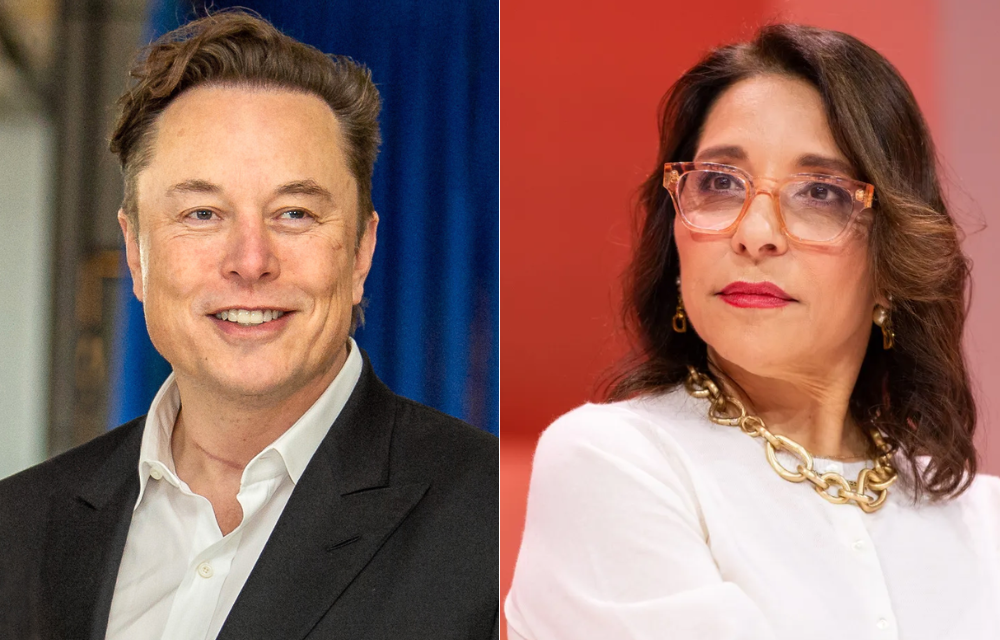When Linda Yaccarino was announced as the new CEO of X (formerly Twitter) in mid-2023, it seemed like a hopeful turning point. Yaccarino, a respected advertising veteran and former NBCUniversal chairwoman of advertising and partnerships, brought with her a reputation for building advertiser relationships and driving revenue growth. Many industry observers viewed her appointment as a sign that Elon Musk’s controversial social media platform was ready to stabilize, repair fractured advertiser trust, and re-establish itself as a viable business.
Yet, just months into her tenure, it became painfully clear that Yaccarino’s time at X was fraught with internal conflict, limited authority, and unresolvable tensions, leading many to conclude that she was set up to fail from day one.
A Company in Crisis: The State of X Before Yaccarino’s Arrival
To appreciate the depth of Yaccarino’s challenges, we first need to understand the state of the company she inherited. Since Elon Musk’s acquisition of Twitter in late 2022, the platform had been engulfed in relentless turmoil. Musk’s management style, marked by sweeping layoffs, abrupt policy shifts, and frequent public controversies, unsettled employees, advertisers, and users alike.
Advertiser confidence plummeted as concerns mounted over content moderation, platform stability, and brand safety. Twitter’s revenues suffered, and many marketers began questioning whether the platform could ever return to its former glory as a prime advertising venue.
These struggles mirror challenges seen across major corporations facing external economic pressures. For instance, Nike recently revealed how ongoing trade tariffs introduced under the Trump administration are expected to cost the company around $1 billion, significantly impacting its global supply chain and financial outlook. Understanding these broader economic headwinds offers context for the difficulties X faced in rebuilding advertiser trust amid uncertainty. You can read more about Nike’s tariff impact here.
In this fraught atmosphere, Musk’s move to appoint Yaccarino — a seasoned media executive with deep ties to the advertising world — was seen as an olive branch to the business community. It was a signal that the platform was pivoting from the chaotic, tech-led leadership style toward a more traditional corporate approach focused on revenue and advertiser relationships.
The Reality: A CEO Without Control
However, the reality that Yaccarino walked into was starkly different from the promise of her appointment. Despite her title as CEO, reports from inside the company suggested that Elon Musk retained ultimate control over key decisions, from product direction to hiring to content policies. Musk’s continued hands-on approach effectively undermined Yaccarino’s ability to exercise independent leadership.
For a CEO brought in to mend advertiser relationships and stabilize the business, having limited autonomy was a critical handicap. Advertisers wanted consistency, clear policies, and operational stability. But with Musk’s unpredictable style still dominating the platform, Yaccarino was often left in the impossible position of trying to reassure advertisers about changes she had no real power to enact.
This tension created a fundamental mismatch between expectations and reality. While the advertising world hoped for a calm, steady hand, what they got instead was a CEO struggling to steer a ship still captained by Musk himself.
Cultural and Operational Chaos
Beyond limited authority, Yaccarino also faced the daunting task of navigating a fractured internal culture. The months preceding her arrival had been marked by mass layoffs, resignations, and a breakdown of long-standing operational processes. Staff morale was reportedly low, and many teams were disoriented by constant strategic pivots and unclear direction.
For a leader coming from a corporate media background, these conditions posed a significant challenge. Building cohesive teams, implementing clear strategies, and fostering an environment conducive to advertiser trust all require a stable and supportive culture. At X, that foundation was crumbling.
Moreover, the platform’s public controversies — from content moderation debates to misinformation concerns — made it difficult to craft a consistent narrative that would appeal to advertisers and users alike. Regulatory scrutiny and media criticism added further pressure, making every move subject to intense public and political examination.
The ongoing geopolitical tensions impacting global markets — such as the uncertain ceasefire between Israel and Iran — have also contributed to market volatility, affecting industries from energy to media. Recent fluctuations in oil prices reflect this uncertainty, adding another layer of complexity for companies like X trying to find stability amid external instability. Learn more about how the Middle East ceasefire uncertainty is influencing markets here.
Advertisers’ Wariness: Trust on Shaky Ground
Perhaps the most critical factor in Yaccarino’s uphill battle was the state of advertiser trust. For years, Twitter had been a major player in digital advertising, valued for its real-time engagement and cultural relevance. But the chaos under Musk’s early leadership had driven away many advertisers, worried about brand safety and the platform’s direction.
Yaccarino’s challenge was to convince advertisers that the platform was now safe, stable, and ready for business again. However, without the authority to enforce significant policy or cultural shifts, her promises rang hollow. Advertisers were hesitant to fully return, often demanding concrete changes that were slow or impossible to implement amid internal conflicts.
Was Yaccarino a Figurehead?
All these factors have led many analysts and insiders to speculate that Linda Yaccarino’s appointment was more symbolic than substantive — a strategic move by Musk to signal stability without relinquishing control.
In this scenario, Yaccarino served as a credible public face, aimed at reassuring advertisers and investors while Musk retained de facto CEO powers behind the scenes. The structural and cultural issues within X were so entrenched that no one leader, regardless of skill, could single-handedly fix them — especially without full control.
The Human Toll: Frustration and Burnout
For Yaccarino herself, this was undoubtedly a frustrating experience. Leaders thrive on agency and the ability to implement their vision. When hamstrung by limited power, constant interference, and a chaotic environment, even the most accomplished executives face burnout.
Her brief and turbulent tenure at X speaks to the personal cost of stepping into a leadership role without the tools or autonomy necessary to succeed.
Lessons for Business and Leadership
Linda Yaccarino’s story at X offers several key takeaways for business leaders and organizations:
- Authority Must Match Responsibility: A CEO title alone is not enough. Without clear authority to make decisions, a leader’s ability to succeed is fundamentally compromised.
- Culture Matters: No strategy or executive can fix a company without a stable, aligned, and motivated workforce. Structural and cultural reforms must come first.
- Transparency and Alignment: For any leadership transition to work, the vision and goals of all key stakeholders — including founders, boards, and executives — must be aligned.
- Don’t Underestimate External Perceptions: Advertiser and investor confidence requires consistent, authentic actions — not just symbolic gestures.
Conclusion: A CEO Set Up to Fail
Linda Yaccarino’s brief stint at X highlights a sobering reality about leadership in today’s high-stakes tech world. Despite her expertise and track record, she stepped into an environment rife with instability, limited authority, and conflicting visions.
Ultimately, her story is less about personal failure and more about the systemic challenges of leading a company where the ultimate power does not reside with the person bearing the CEO title. For X to truly stabilize and grow, it will need more than a new CEO; it will require fundamental changes in leadership structure, culture, and strategic direction.
Until then, Yaccarino remains the CEO who never really got a chance — a cautionary tale of how leadership, no matter how talented, can be undermined by forces beyond any one individual’s control.





